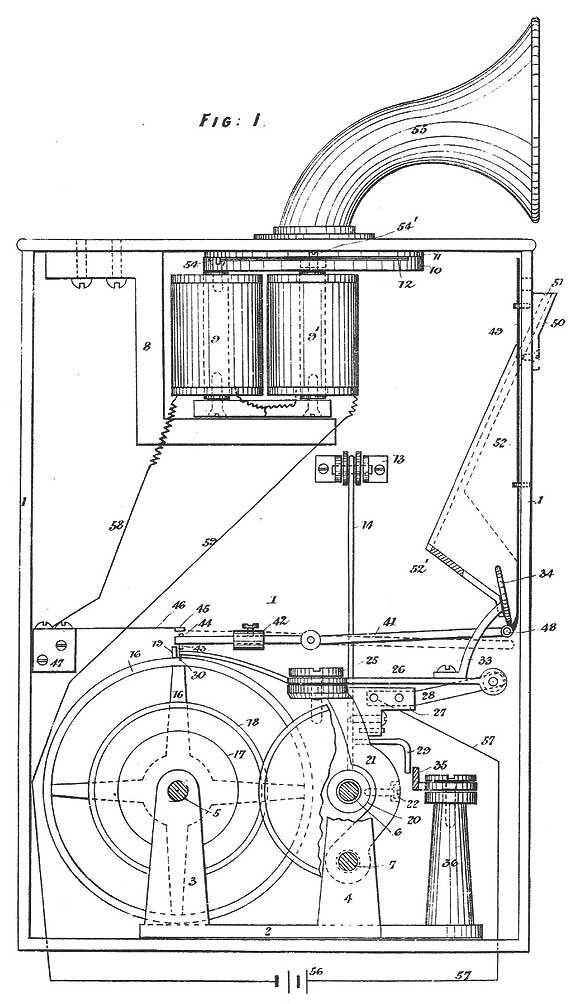
 |
Version: May 29, 2023 |

|
In 1888 Charles Adams-Randall, an English electric engineer, filed patents for electric recording and playback of phonograph cylinders. The playback machine (in the drawing above), called the Automatic Pariophone, was coin-operated and intended for use with prerecorded cylinders. The sound from the cylinder would activate a membrane at the bottom of the horn placed on top of the machine. Adams-Randall sketches two methods for transferring sound from the cylinder to the membrane:
I find it somewhat difficult to understand just how the undulations of the groove would be translated to an electric current. The phrase "making and breaking or varying a current" seems to me to offer a choice between either a binary on-or-off current (which would give a horrendous sound) and one that reproduces the shape of the groove. Of the two methods, Adams-Randall preferred the electric for its "louder and more natural tone". It is not known to me if the player was ever built or marketed. Christer Hamp, 2023 |

|
The patents referred to are filed on 5 and 10 July 1888 (No. 9762 and 9996). My thanks to Gert Almind for providing me with the patent No. 9762, from which the drawing above is reproduced. |

| The patent for a player: | ||
